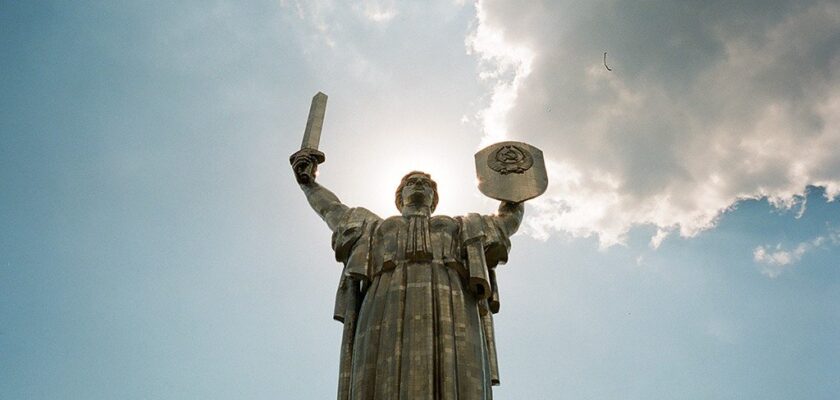Motherland Monument in Kiev (Batkivshchina-Mati)
Motherland in Kiev is a majestic and militant statue of a woman with a sword and shield in her hands, rising in the very center of the Ukrainian capital on the bank of the Dnieper River. The monument has become a beautiful symbol of the courage of the people who won World War II and continue to fight for their future.
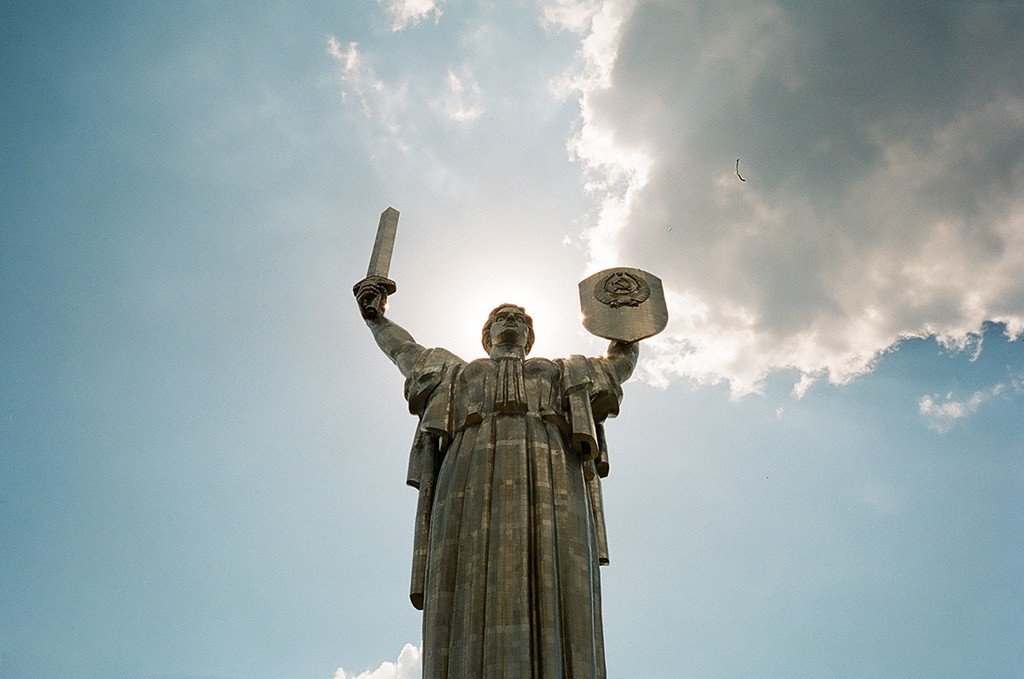
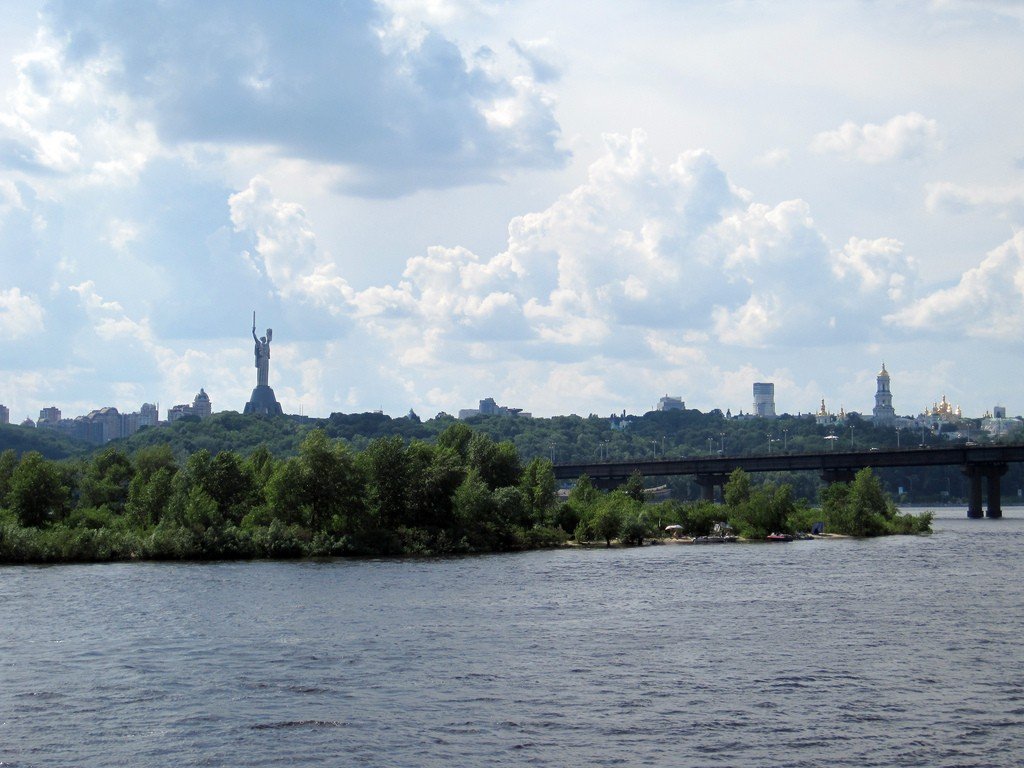
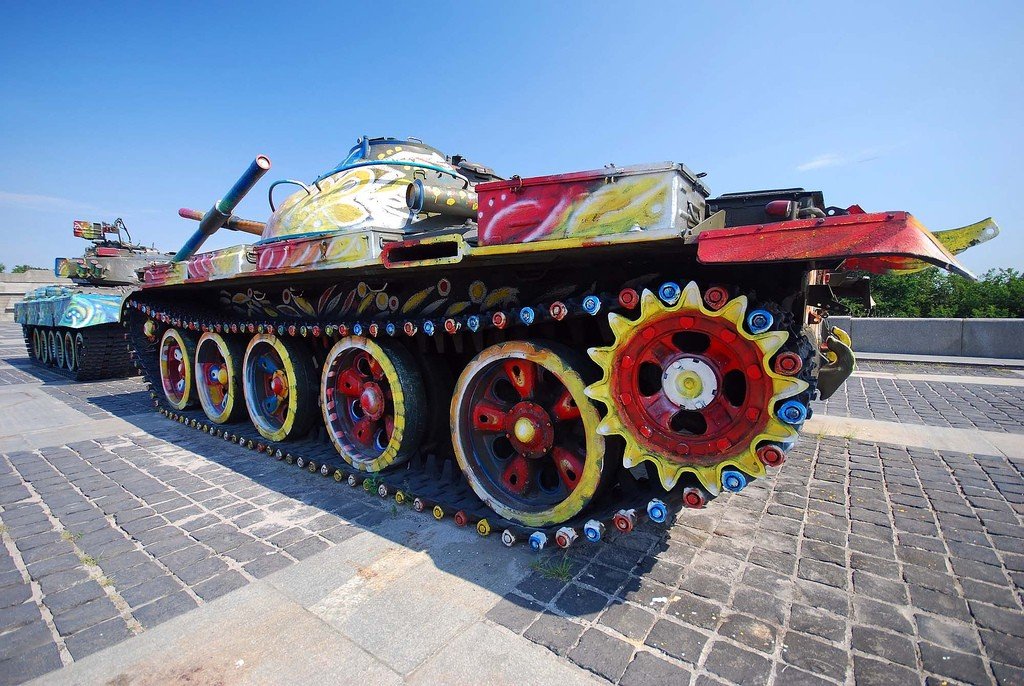
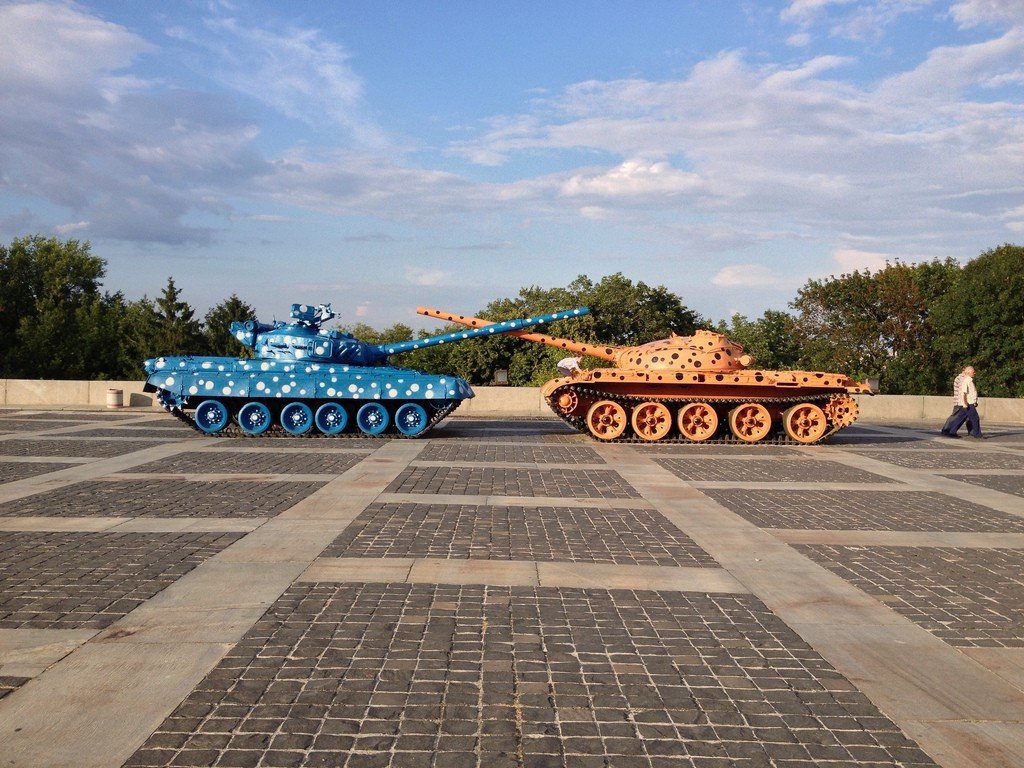
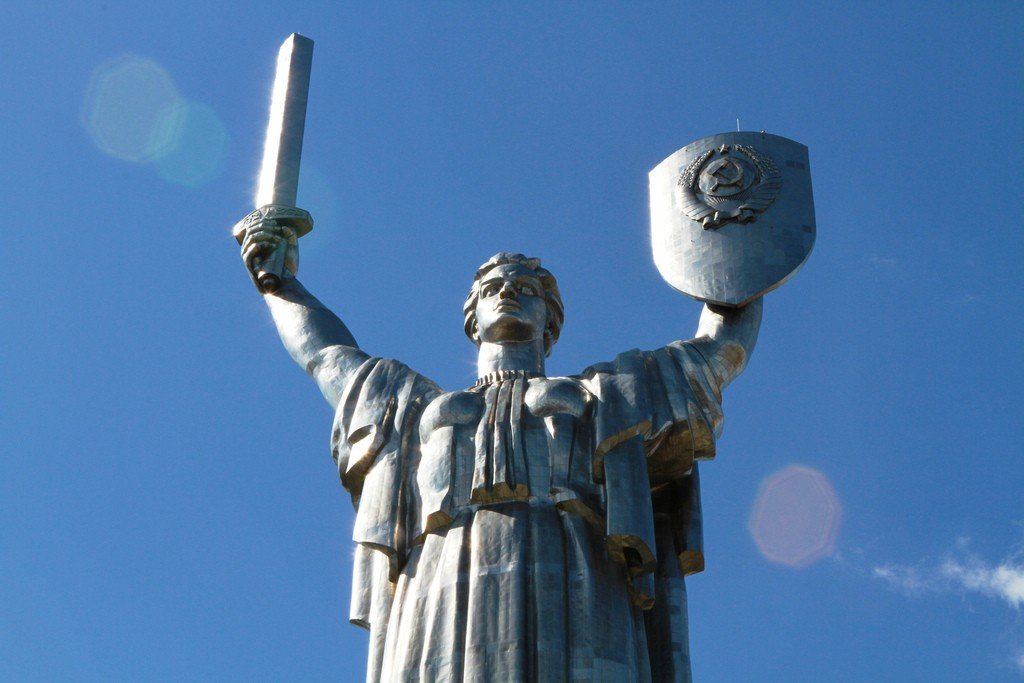
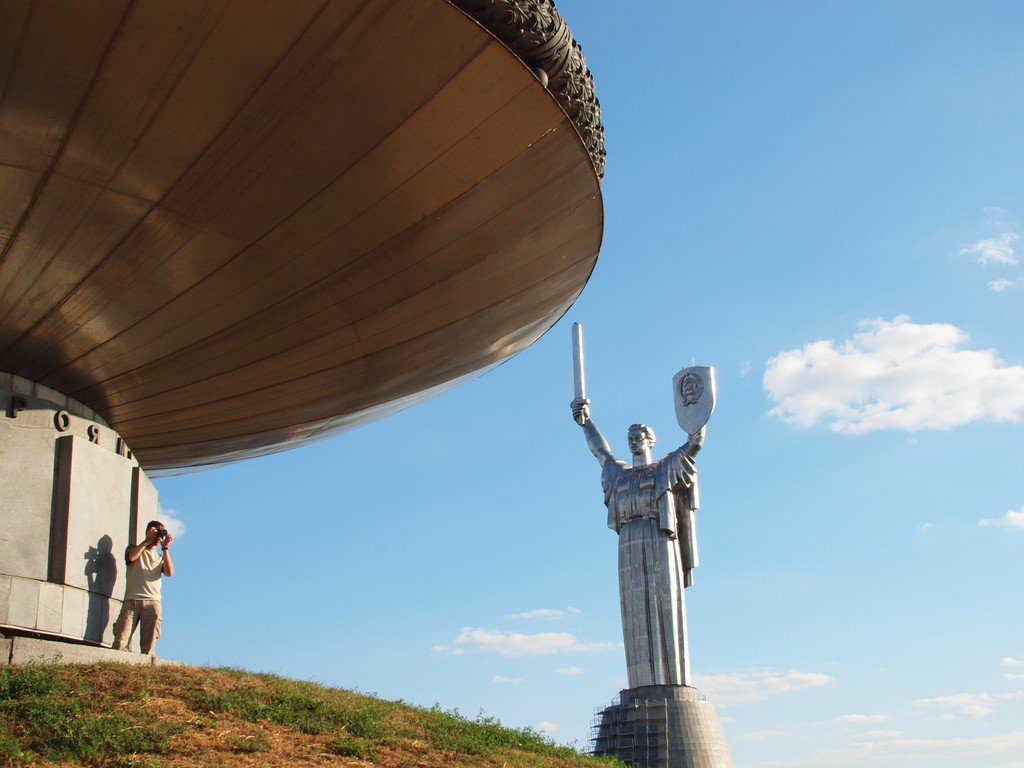
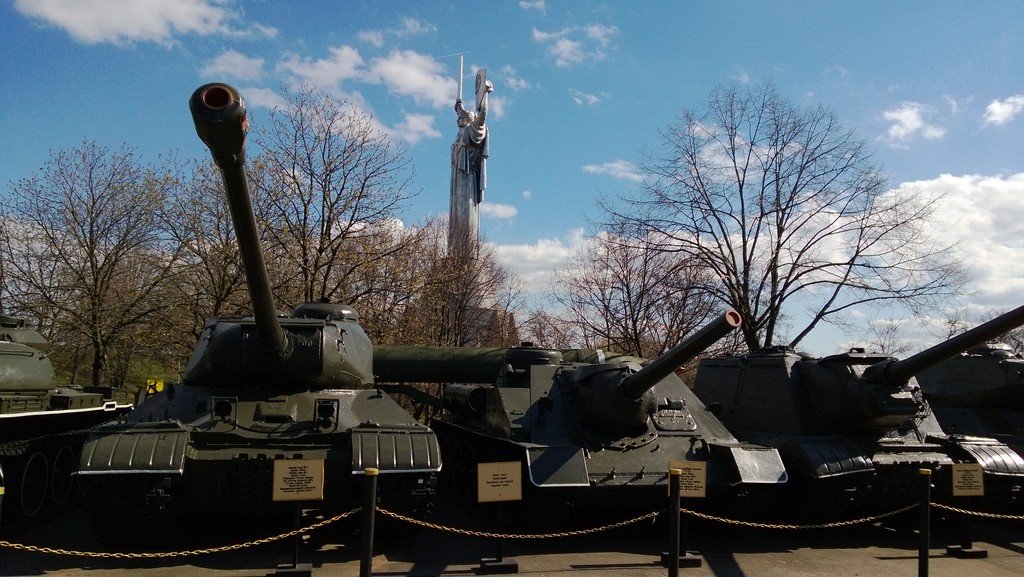

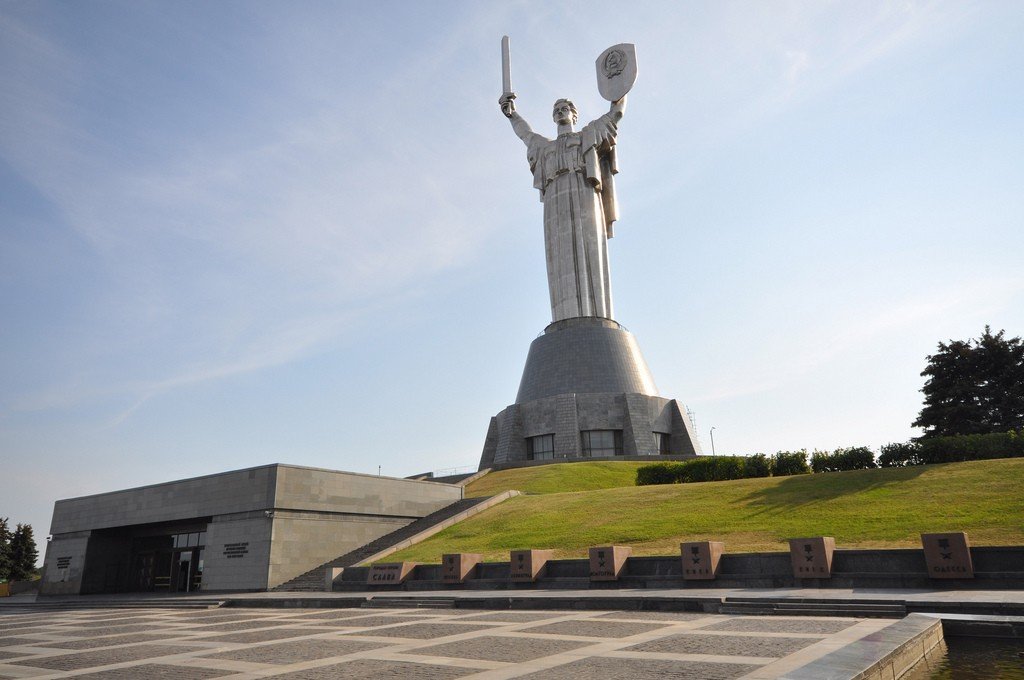
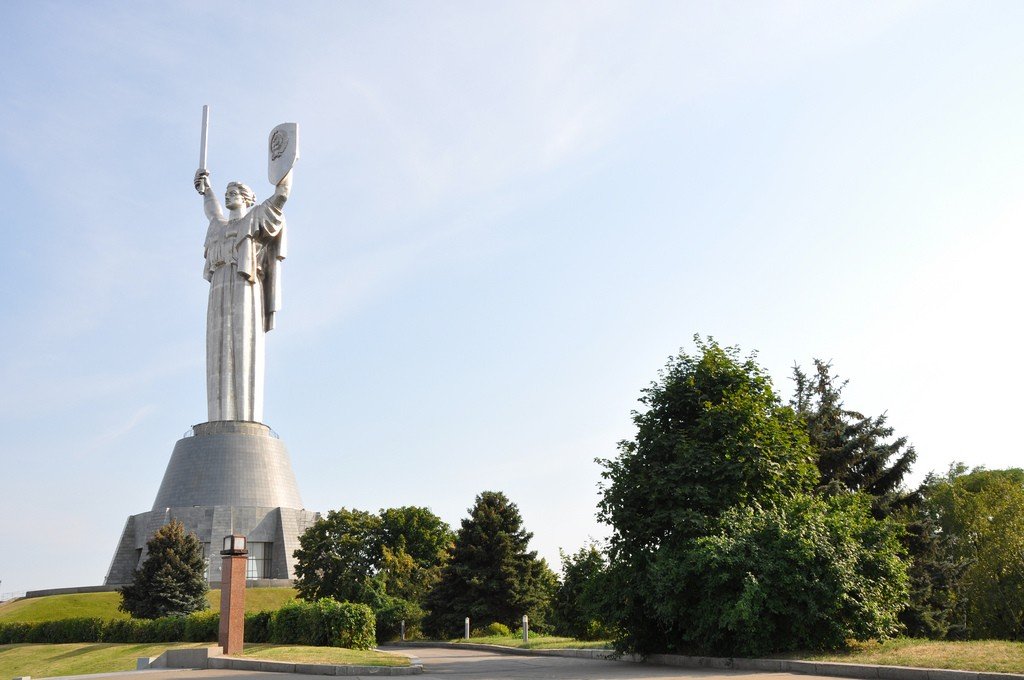
Highlights
Any Kiev citizen, if asked about the main symbols of the city, will name the Motherland statue as one of the first. The sculpture, which is part of the memorial complex “National Museum of the History of Ukraine in World War II”, is one of the tallest in the world and is clearly visible from various points in Kiev.
.
The monument consists of two parts: the pedestal and the statue. The total mass of the structure is 450 tons, and its height is 102 meters. At its foot there is a museum of the Great Patriotic War. Only when you are near it, you can realize the real scale of the sculpture – even the tanks standing below on the platform, on its background seem quite tiny.
.
Kiev citizens immediately liked the statue, but it is associated not with Victory, as it was conceived, but with the Motherland. On the occasion of national holidays it is “dressed” in national colors with the help of artistic lighting, and in May 2015 a wreath of poppies was placed on its head. Locals affectionately call the Motherland Mother “Lavrentievna” – because of its close proximity to the Lavra, less often – “Leonidovna” – after the name of General Secretary Leonid Brezhnev, during whose reign it was erected.
.From idea to realization
The Motherland Monument was designed in the late 1970s of the 20th century, and its creation was timed to coincide with Victory Day celebrations. However, before the grand opening took place, the team of design engineers had to do a tremendous amount of work: it was the first object of such height and type of construction in the USSR. At first, the construction was headed by Yevgeny Vuchetich, known for the Volgograd memorial “Motherland Calls”. It was supposed that a stele would be erected on the bank of the Dnieper, and a waterfall would flow at its foot, symbolizing the river, which was forced by the soldiers. There were also plans to create a tunnel to commemorate the victims of concentration camps. However, the architect died before realizing his plan. Further work of the creative team was headed by Vasily Borodai. He brought radical changes to the project, making the statue not militant, as it was conceived, but rather triumphant. The model for the female image was sculptor Galina Kalchenko.
.Motherland in Kiev has a complex construction: inside – a steel backbone weighing more than 280 tons, on top of it – an auxiliary frame and cladding. The material chosen for the latter was steel melted at the Zaporozhye steelworks. The sheets, measuring 50×50 cm and 1.5 mm thick, were connected by more than 30 kilometers of the famous “Paton’s seam” made by specialists of the Institute of Electric Welding of the same name. Since the sculpture had colossal dimensions, a ten-ton crane had to be made for its construction. After the work was done, it was dismantled, but they did not have time to remove it before the opening of the monument, so the cut parts were dumped into the river.
.
There is an interesting story associated with the sword that the “Motherland Motherland” holds in her hand. According to popular legend, it was shortened on the recommendation of the Metropolitan of Kiev. He convinced the project leaders that the weapon symbolizing war should not be higher than the nearby Lavra bell tower. It is not known to what extent this version corresponds to reality. Most likely, the length of the sword was reduced for safety reasons and to preserve the architectural balance.
.
The statue’s face has also undergone changes. She slightly increased the nose, as it turned out that from below it looks disproportionately small. This “cosmetic” nuance was corrected after the opening. But the asymmetrical breast was left unchanged.
.Works on the monument began in 1979, they were planned to be completed in a year, but construction was delayed. The grand opening took place on Victory Day in 1981, the event was attended by General Secretary of the CPSU Central Committee Leonid Brezhnev. Vasily Borodai was awarded the Lenin Prize for this work.
.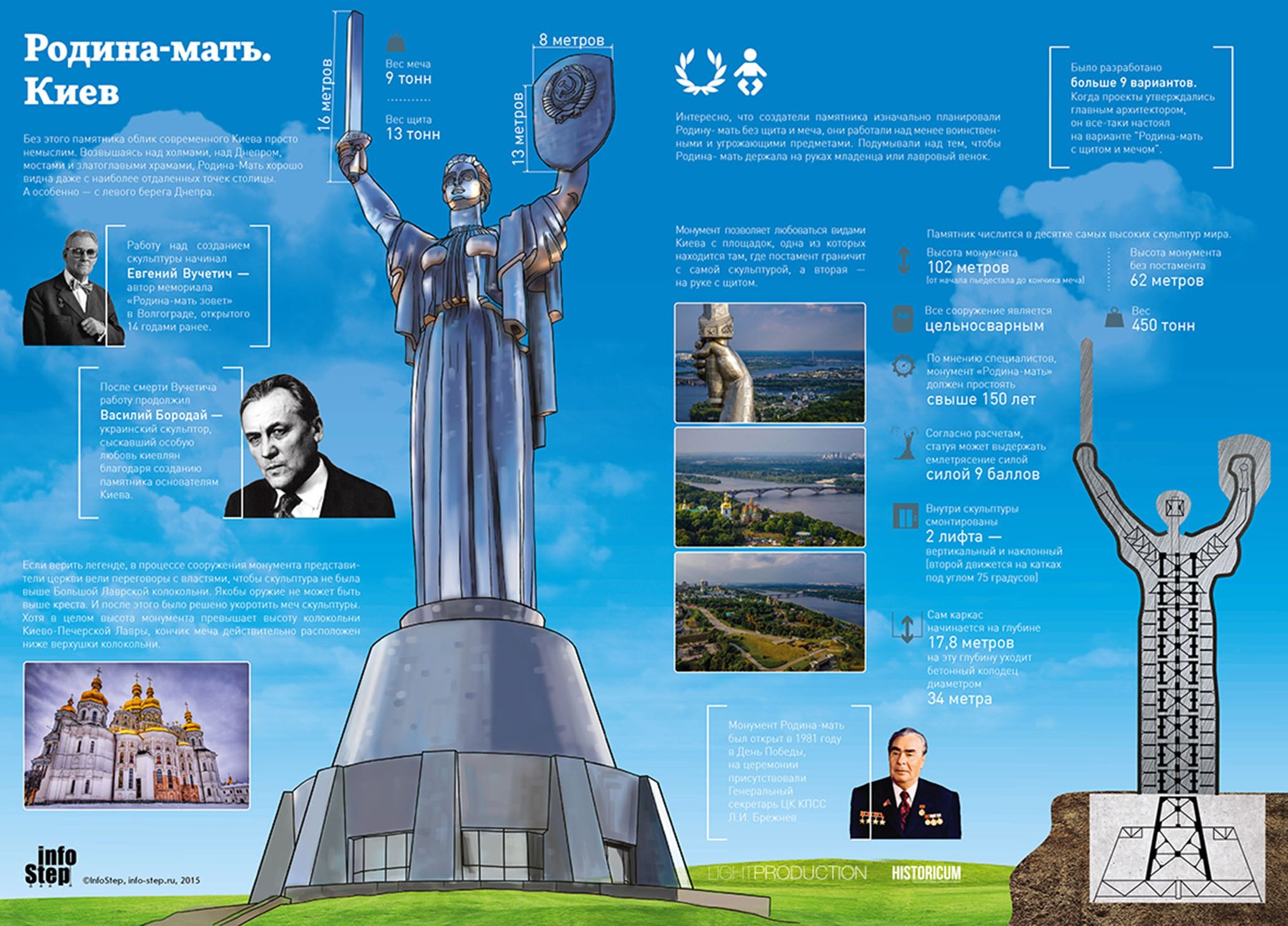
Ready for any strain
To ensure the safety and durability of the monument, engineers carefully thought out all the details of the structure. Thus, it was made stable with the help of a unique foundation – a concrete well going underground for 17.8 meters. It is at this depth that the frame of the monument begins. According to experts, “Motherland” can survive even a 9-point earthquake. Fortunately, in practice, this has not been tested, but the strongest hurricane, which swept over the city in 1987, had no effect on the condition of the monument.
.
Another important element is the shape of the weapon. Learning from the failed experience of the monument on Mamaev Kurgan, whose flat sword made of reinforced concrete had to be replaced, the blade of the Kiev “Motherland Motherland” was given a diamond shape. Before installation, it was tested in a wind tunnel in Kiev. To dampen the vibrations that can be caused by gusts of wind, at the very tip of the sword installed a special device acting on the principle of a pendulum.
.
The condition of the monument is constantly monitored, annual studies are conducted. Their results show that the dynamic balance is preserved without change. This confirms the words of the designers, who said that the statue will stand for at least 150 years.
.
Climbing to the observation decks
If tourists want to see Kiev from a height, there is no better place for this than the monument “Motherland”. The observation platforms at a height of 36.6 meters and 90 meters are open to the public. The first one is located in the pedestal at the foot of the statue and is intended for both single and mass excursions. Binoculars are installed around the perimeter, so you can have a good look at all the sights around: the Dnieper steeps, the golden domes of Kiev-Pechersk Lavra, the National Botanical Garden named after M. M. Grishka and the memorial complex itself. Entrance here costs 50 UAH.
. Fans of impressive views and thrills can climb to the upper observation decks, equipped in the hands of the statue on the shield and at the base of the hilt of the sword, as well as on the top of the head. Such an excursion costs 200 UAH. Three people are allowed here, including the guide. Most of the way tourists go up by elevators, but to get to the top, you have to walk on steep steps in a narrow space. Visiting time is also limited – no more than 15-20 minutes. The area near the shield is fenced with a protective net, where you can move freely and take photos. Taking into account the height of the monument and design features, children, people with cardiovascular diseases, and weight restrictions are not allowed up there..The monument is located at 24 Lavrskaya Street. The nearest metro station is “Arsenalnaya”, near it to the monument goes bus #24 and trolleybus #38. The museum is open from 10:00 to 18:00, but in the heat of the day due to heating of the metal and in winter during icing the upper observation decks are closed. You can specify the working schedule by phone +38 (044) 285-94-57, excursions can be ordered by phone +38 (044) 285-94-52.
.